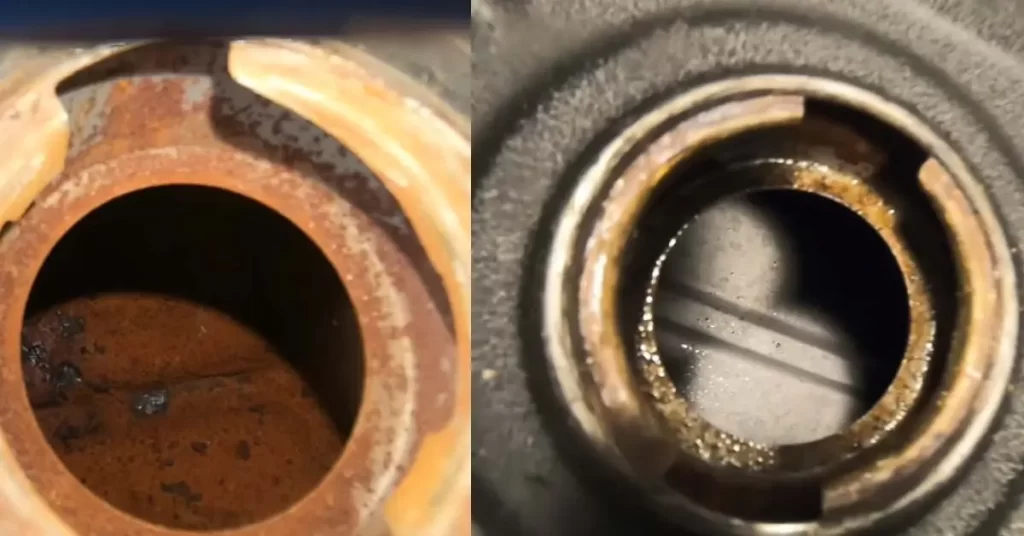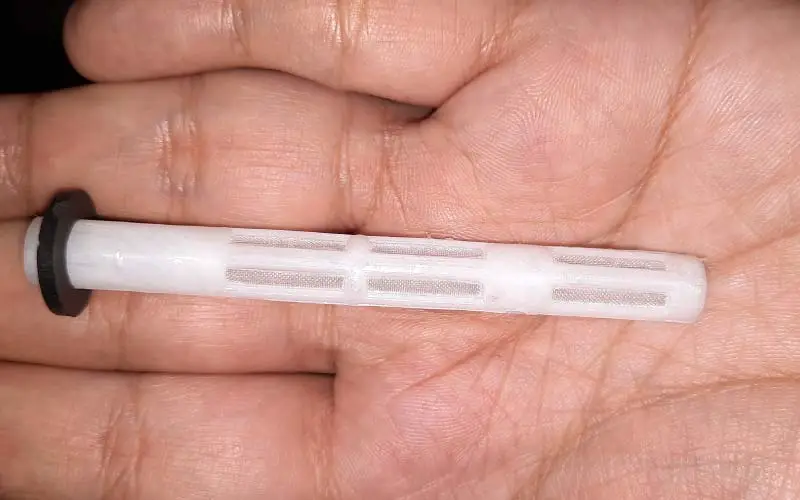How to Clean Generator Fuel Tank? – [7 Steps Guide]
Scheduled cleanups of the fuel tank will not only increase the longevity of the machine but also help the fuel pump to run stronger and enhance the overall performance and efficiency.
Excessive dirt, debris, or rust can restrict the flow of fuel or may clog or damage the vital organs of the engine.
This guide is all about cleaning the generator’s fuel tank without hiring a professional!

How to Clean Generator Fuel Tank?
Required Tools and Materials
Safety Instructions
1. Drain The Old Fuel:
Empty the fuel through the drain valve or you can also use a siphon pump to drain the fuel as much as possible. This guide will help you drain the generator’s fuel safely
NOTE: Examine the condition of the fuel, if it looks fresh and uncontaminated you can reuse it, however old or contaminated fuel should be disposed of as per the local regulations.
By using a fuel line or any smooth-faced clamp, seal the fuel line near the carburetor
2. Remove The Fuel Tank:
Depending on the type of generator you own, the fuel tank removal may be simple or complex, as per my experience open-frame portable generators generally have cap screws that can be removed easily.
PRO TIP: If you own a machine with a complex tank removal mechanism, leave the valves and caps in position so that the re-installation process will be simpler later on.
3. Use a Flashlight to Inspect The Fuel Tank:
Inspect the empty fuel tank for debris and rust with the help of a flashlight (a mobile flashlight will work perfectly).
Also carefully look for the beads of lights as they are great indicators of possible holes and cracks present on the surface of the fuel tank.
If you find severe damage, make sure to replace it with the original manufacturer’s equipment.
4. Clean The Fuel Tank:
Use a chemical agent like Baster or Berryman B-12 Chemtool to remove excessive deposits or loosen the debris, make sure to shake and swirl a bit to lose the debris, rust particles, or Microbial growth.
NOTE: It may take a few sessions to clean the fuel tank depending on the condition of the fuel tank; also you may have to keep the tank outside under the sun for a while for effective cleaning.
If the fuel tank is rusty I recommend using an EVAPO – RUST or any rust cleaner to get better results.
5. Inspect The Condition of The Fuel Filter:

Examine the fuel filter and remove the debris or any excessive deposits, if you find any damage or broken mesh, make sure to replace it.
6. Clean The Fuel System:
Run a detergent-based fuel additive through the fuel system to ensure the fuel lines, carburetor, intake valve, and combustion chamber should be cleaned. Berryman B-12 Chemtool High-MileEdge Fuel System Cleaner Concentrate is working very well for me.
Fuel system cleaning will not only prolong the life of the machine but also help with hard starting and rough idling.
7. Reattach The Fuel Tank:
Re-install the fuel tank; make sure that all cap screws, valves, and hoses are perfectly fitted, minute leakage of the gas will not only hurt the environment but also can catch fire.
NOTE:
- Never repair a damaged tank. It not only poses the risks of leakage but also could restrict the fuel flow.
- Read the user manual first before starting; also replace any part with the original manufacturer’s equipment.
Why Should I Clean The Gas Tank Of a Generator?
Below are some of the obvious reasons to clean the generator’s fuel tank.
How Often Should I Clean the Fuel Tank of My Generator?
As a general thumb rule, the generator’s fuel tank needs a proper cleaning after 1 to 2 years if the generator is in use.
On the other hand, If the generator is unused for a long, your first task should be an inspection of the gasoline tank, fuel system, and filters.
Also if your generator is running roughly even after cleaning the fuel system, you should inspect the fuel tank with the flashlight to confirm whether the fuel tank is cleaned or not.
NOTE: Before removing the fuel tank, inspect the outer and inner condition with a flashlight, if there is some leakage or you find excessive buildups inside, clean or replace it depending on the condition.
What Causes Rust in Generator Fuel Tank?
How Do I Stop My Generator Gas Tank From Rusting?
Frequently Asked Questions – FAQs
What Should I Use to Clean My Generator’s Fuel Tank?
Depending on the tank condition, if it’s rusty we recommend using CRC Evapo-Rust or Rust911, however, If there is dirt or debris you can use vinegar, or Berryman B-12 Chemtool fuel system cleaner.
How Do You Know if Your Gas Tank Is Rusty?
You can use a flashlight or torch to inspect the inner condition of the fuel tank.
Will a Rusty Gas Tank Ruin an Engine?
Yes, rust particles may clog or even damage the engine’s vital components like carburetor, cylinders, jets, etc.
Can I Clean the Rust Out of the Generator’s Tank With Vinegar?
Yes, you can mix vinegar with baking soda to clean a normal rusty fuel tank, however for extreme conditions I recommend using CRC Evapo-Rust or Rust911.

Kashif has been a valuable asset to the electric generator industry for over 5 years. Now, As a skilled energy engineer, he’s been on the front lines of diagnosing problems, fixing broken parts, and performing routine maintenance tasks to keep generators running smoothly.
